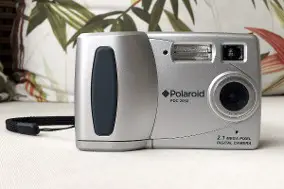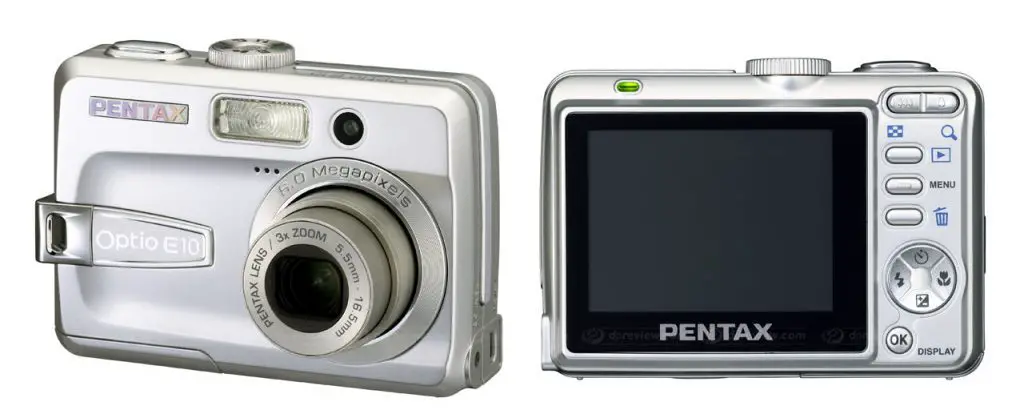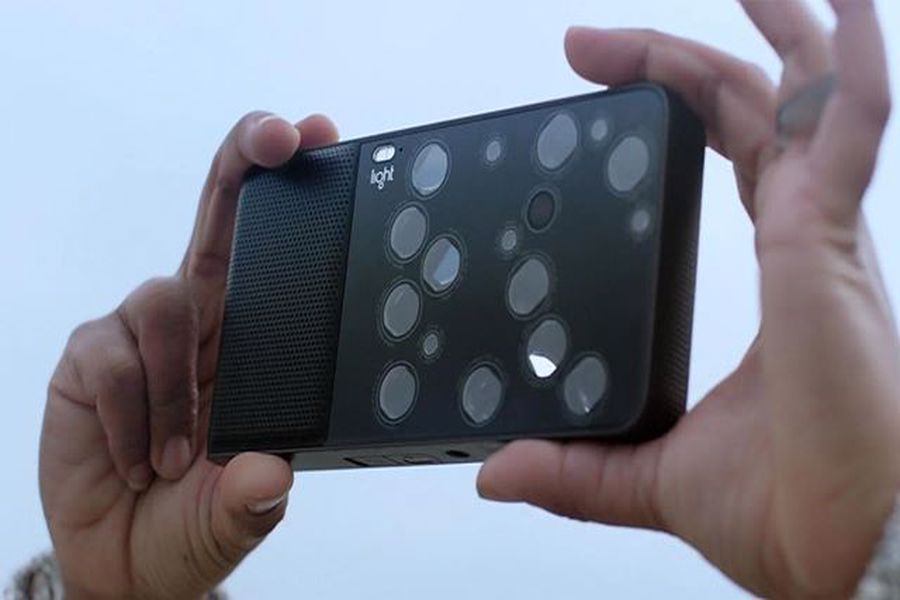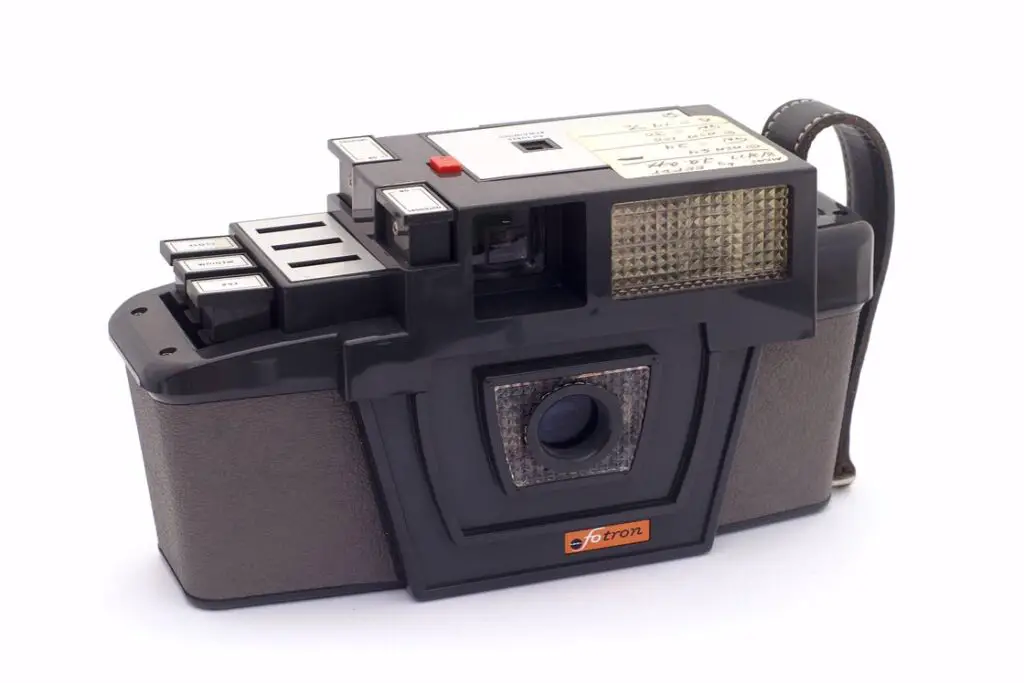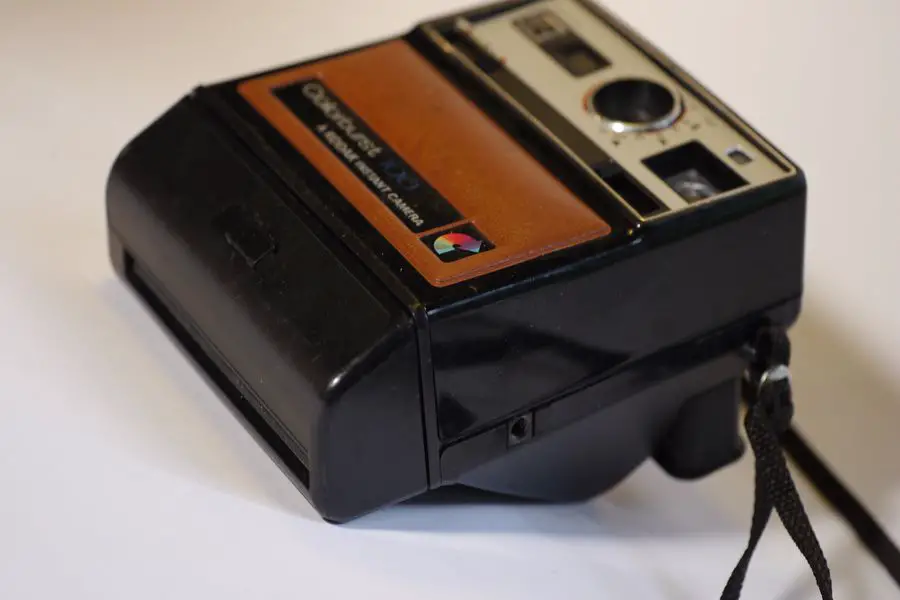As an Amazon Associate we earn from qualifying purchases.
One of the perks of being the editor of a site like Digital Camera HQ is getting to read all the reviews submitted by our readers. Sometimes, they’re pleasing, when it’s clear that a person has found the perfect camera for them, and is happy enough to contribute a five-star review and recommend it to others.
Occasionally, they’re extremely entertaining, like the first-person narrative of how a faulty camcorder spoiled the documentation of a user’s vasectomy (see “Black Screen of Death or Lens Cap On (2/8/06)”). Every once in a while, they are loaded with colorful expletives that, no matter how justified they may be, I am unfortunately forced to censor.
This is a family site, people!
In the midst of all these different types of comments, however, there are some who had a bad experience with a Nikon d3200 and swore to never buy from a certain manufacturer again. Another one whose Sony M1 wouldn’t recognize his memory card swore to never buy Sony in the future.
A busted LCD convinced buyers to never trust Fuji, while the Kodak LS443 was so terrible it not only convinced them to avoid Kodak, but to spread the word to all parts of the world about their poor products and customer support.
There are literally hundreds of these reviews, and sometimes you may wonder if eventually, enough people will have sworn off enough brands to completely undermine the digital camera market. This drastic methodology is flawed, however. Because of the bad experience, many buyers hated photography claiming that it is embarrassing and never interesting.
Buyers’ vow of avoidance is keeping them from discovering the Kodak V610, one of last year’s most interesting and highly reviewed cameras. If you were to read through every negative, never buy from this manufacturer review, you’d get the impression that there weren’t any digital cameras worth picking up at all.
We know that’s not the case, but some people are still stumbling on landmines in their search for a good camera. While it’s easy to get upset, we urge spurned users not to write off an entire brand. Try reaching their site for customer service and by all means, voice your extreme displeasure, but realize that sometimes a camera is just a dud.
If you really want to find the right one for you, you’ll examine them carefully on a camera by camera basis. Now, we understand that we’re leaving out legions of low-quality no-name cameras that are, almost certainly, extremely terrible cameras. There’s no sense in beating up on obviously bad cameras like the Saitek Credit Card Digital Camera or a Concord Eye-Q.
The cameras you’ll find below are the worst digital cameras ever, all from manufacturers who should have known better, and from whom a higher standard of video and image quality is expected. At best, they are examples of neglect and a lack of thoughtfulness. At worst, they are mendacious con-jobs taking advantage of trusting consumers.
We at Digital Camera HQ hope that readers are able to see where these cameras went so horribly wrong and how those who bought them were misleading or confused, so as to avoid the same fate.
Contents
The Canon PowerShot A70
Yes, it may be hard to believe what people say about the Canon A620 or SD700 IS, but Canon made a the worst camera ever. The Canon A70 had a very auspicious start, garnering 4 and 5-star reviews from eminent professionals like CNET and Imaging Resource.
At the end of an exhaustive and comprehensive technical review, it is referred to as a better camera for the point-and-shoot crowd. On the strength of these early reports, and the general strength of Canon cameras in general, consumers flocked to buy the A70, and it became a very successful and widely-used model.
What nobody knew at the time was that there was a little gremlin lurking deep within the A70 that would result in one of the biggest digital camera disasters we’ve ever seen. Like clockwork, after about a year of picture perfect operation, users began experiencing problems with their cameras. Strange purple lines began appearing across the LCD screen, obscuring the display.
Pictures became fuzzy and blurred, and often distorted with unusual colors. Then the dreaded “E18 error” made itself known, causing the camera’s lens to become stuck while extending. User A. A certain user gives a good idea in their review, stating that this camera was great for about 1 year. For the 2nd year it had the purple lines across the screen which were recorded with each shot rendering it useless.
It stopped working altogether with the e18 error after a year and a half. Eventually, the noise being made by angry users who now hated photography became worse, that Canon was forced to do the right thing, and offered a free repair for the A70. Note however, that their service notice seems to only address the malfunctioning CCD sensor, and not the E18 error.
The number of comments we have received regarding this camera and its problems is tremendous, and the volume is so great that we’ve had to choose only a select few to display so as not to clog up the page. Much of what isn’t visible, however, can be easily summed up by a certain user, who said that you can bet that you will never purchase another Canon product.”
Sea Life DC500
The SeaLife DC500 is a testament to what some really good PR work can do for an otherwise abysmal digital camera. We first took notice of this worst camera about a year ago, when Time Magazine named it one of the The Most Amazing Inventions Of 2005. It seemed a tad suspicious.
For one, there wasn’t any concept about the camera that we felt truly qualified as an “invention.” It was a digital camera with some underwater housing. Sure, it was pretty small and relatively affordable, but it seemed like a rather strange choice for the Time feature.
Nevertheless, there was a lot we could hear, and so we gave buyers an opportunity to let us know what they thought of the DC500. Our suspicions were more than confirmed.
The SeaLife DC500 had made some very grand claims, and by presenting itself as a good camera for the high-pressure (no pun intended) arena of underwater photography, there was a lot more at stake than with the typical mainstream camera. The disappointment is palpable in this review from a certain user who just spent a week in the Bahamas, and saw her first Lionfish ever.
Unfortunately; only a few of the shots you take are in color because the flash doest function well. Another user also gives the account that the camera locks up every other dive and can’t be unlocked under water.“
Not exactly a well thought out design by Sea Life. Were it not for the gargantuan amount of hype generated by the story in Time, the SeaLife DC500 would have been just another terrible, no-name camera in the world. Instead, many buyers were swayed by the opinion of what they thought was a reputable publication and wound up with a frustrating piece of jetsam.
Nobody should feel bad about falling into this trap of the worst cameras. Two years ago, when the first edition of the Kodak EasyShare One debuted, it looked like it was going to be an absolute blockbuster. 4 megapixels was adequate back then, and when combined with the slim design and huge 3.0-inch touch-screen LCD screen, it was hard to resist.
On top of all that, the Kodak One was the first digital camera to feature support for Wi-Fi image transfers, another feature that surely lured in a fair share of early adopters. In the end, it seems that Kodak cared more about superficialities than substance, and the EasyShare One turned out to be aptly named.
All the potentially positive aspects of this kodak camera are buried beneath layers of annoying interface, and even if they weren’t, the sub-standard image and video quality it provides completely invalidates the camera.
Overall, imagine it as a very poor quality product as there have been problems with lens extend/retract, lens cover sticking. Stuck lenses, broken battery doors, and other issues with the camera’s gear seem to be common.
The Kodak EasyShare One was a failure because it tried to get by on looks and flashy gimmicks while completely ignoring the basics of what makes a good digital camera in photography: an attention to image and video quality and the ease-of-use typified by the EasyShare line. In the years since Kodak has cleaned up their act, and the wireless Kodak V610 is now one of our best-reviewed cameras on Digital Camera HQ.
Polaroid PDC-5080
A lot of readers from all over the world write to us asking why we don’t cover certain brands. In the case of Polaroid, it’s because they are so terrible at making digital cameras, they’re not worth writing about (unless we’re specifically talking about terrible cameras).
It’s a true shame to see the once king of instant images fall by the wayside and be completely shattered by digital photography, but it’s their own fault for clinging to an outmoded style and technology that did not make any sense. Plenty of people were suckered into buying Polaroid digital cameras, with happy memories of their film models, and were completely and utterly disappointed by the shoddy designs and poor performance.
Even a 14 year old kid can clearly know that something didn’t seem right about the Polaroid PDC-5080. How could they sell a 5.1 megapixel camera for $90 when similar models from other brands cost 4 or 5 times as much? The answer is clear: it’s a cheap, horrible camera that can’t really take 5.1 megapixel images or videos.
The PDC-5080 earns a place on our worst camera ever for sheer audacity. It’s the kind of marketing boondoggle that makes the increasing marginalization of Polaroid a lot less upsetting. At the time of this publication, the Polaroid PDC-5080 is a high ranking Google result for the phrase worst digital camera ever closely followed by our next entry.
Pentax Optio E10
It may be because of the idea that it is a more recent camera than the others, but I’m tempted to officially name the Pentax Optio E10 the worst digital camera ever, not ideal for any type of photography. It started working in January of 2006 with claims of how easy to use it was and how affordable it was, and for a while you could imagine the E10 as a decent, economical 6-megapixel ultra compact for simple use.
Since then, an unmitigated stream of vitriolic, hate-filled user comments have deluged the Pentax E10’s site.
The manual states that it has a resolution of 6mp but it looks like a 2mp image stretched and interpolated. Some buyers said that $20 cameras outperform this piece. While others offer a familiar refrain stating that using Pentax is hell, and will actively discourage anyone they know from buying one as well.
Perhaps the most succinct summation of how people feel about this camera comes from one user who explains that the Optio line is really an acronym for please turn it off.
Light 16 Camera
Light 16 camera is the worst camera ever used as the front part features 12 camera sensors with glasses and mirrors that are prone to fingerprints. It is advertised as 4K- video capable which does not materialize. Without any kind of image stabilization mechanism, this worst camera is prone to the camera shake effect especially when shooting handheld.
It has many issues of shutter lag and its performance in low-light is not appealing. With few controls, you have to control everything using the rear touch screen. After powering it and beginning shooting, you have to select a picture or video and wait for the camera to process it to a full-size photo on the screen.
Considering that the camera captures images with a 50 megapixel resolution, the image and video quality is very poor and not matching what you can expect from this resolution. Even worse, the usual controls for adjusting contrast and exposure are slow to respond and poorly designed.
The next big thing is that once you are through with capturing images, you can be disappointed like a young kid because getting the photos from the camera is another issue. You have to learn the concept of downloading the pictures using the lumen which is a proprietary software.
This is the worst piece of software as it loads images very slowly and waiting for an image or video to open for editing takes forever. The only appealing thing about this camera is that you can use computational photography to select the depth of field when processing the photos.
Using this stuff is fun as it allows you to select the edges or border areas, from which you can separate the out-of-focus and in-focus regions. The captured images and videos have a weird color feel and are not appealing to look at. It does not feature any face detection ability and you can either hit or miss the focus.
Traid Fotron
The Traid Fotron comes with a push button focusing system and a built-in electronic flash, enhancing ease of use. It is powered by a large capacitor inside the camera that is recharged using a regular 120 volt AC through a charging cord that plugs into the camera’s base.
Recharging the camera takes a minimum of 18 hours to shoot one ten exposure cartridge. If shooting more than one cartridge, it is advisable to charge the camera for 72 hours. Prior to making an exposure, you should wait for 15 seconds to give your camera time to reach full power.
This should be done before trying to fire the shutter. After the camera has attained full power, you can now make an exposure by pressing any of the three focus buttons to fire the shutter. Although the camera is referred to as the camera for ladies, it simplifies many parts of photography that seem to intimidate novices of any gender.
It was primarily sold through back of magazine advertisements and by door to door salesmen. Beside selling them at high prices beyond the camera’s worth, the salesmen used questionable sales tactics. At some point after launching the original model, a decision was reached to stop retail sales and market the camera through door to door sales and mail order.
However, for mail orders, buyers had to wait for quite some time before getting the verification email that the company received the order. It was heavy and oversized with sharp edges and a huge leather strap on the side.
Considering that it can only use Kodacolor film, its exposure system can only be tuned to this film. This worst camera produces 10 one by one inch photos per every cassette.
If you sent the images to the corporation for further developments, it could have resulted in eight by eight inch enlargement. However, the photos are amazingly smaller than the camera’s large size. This stuff uses Snap-Load magazines with the 828 roll film.
Counterfeit Canon Q5200
Purchasing the Counterfeit Canon Q5200 will disappoint you as it sells in shops or eBay as a Canon when obviously it is not. It is among the worst cameras as it is not listed in any Canon’s reference. It has none of Canon’s usual ways of identifying its cameras.
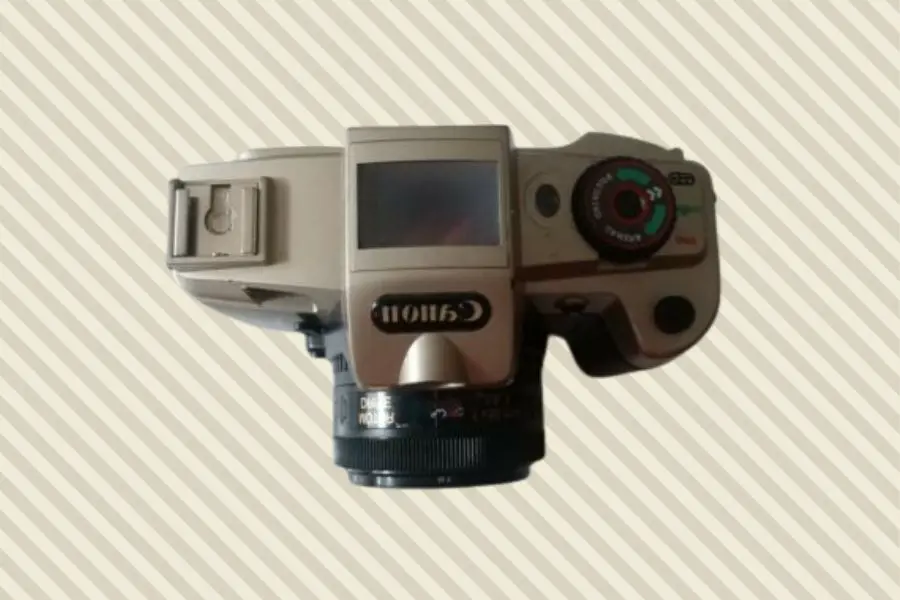
Although it has zero resemblance to canon products, it is sold under a wide variety of model numbers and fake brands which are often changed to prevent buyers from realizing the trick. At a glance, it is appealing to the eye, looks like an advanced SLR with a potato masher flash and a built-in winder.
However, it is a TLR in reality and you can find the front window for the waist-level finder on the pentaprism under the bogus canon label. Being one among time worst cameras, it features a cheap plastic construction and a block of lead in it to add on its weight.
The loading comments state that the wide-aperture is bogus as its aperture is smaller in reality. The eye-level finder peeps out through the window on the camera’s left side. With a fixed focus and a fixed aperture permanently mounted, the camera seems appealing and you cannot identify any odds until you operate it.
Harrison Fotochrome
The Harrison Fotochrome is a point and shoot camera, without any kind of manual exposure settings. The only capturing option available is using the flash. The 2 x AA alkaline power batteries are for the flash alone and not the shutter.
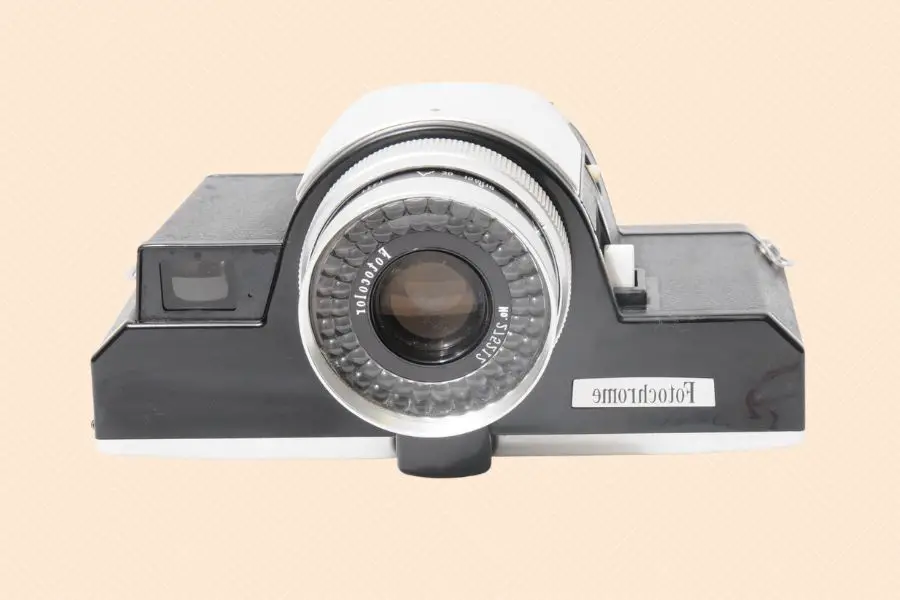
After making a shot, it does not produce negatives so you cannot make any copies or enlargement later without first ordering them from the Harrison company. This strange looking camera uses a direct color film that produces ten two by three images each roll.
After capturing a roll, you need to send the first film back to Harrison for development as you cannot develop the film by regular labs. Unlike other camera lenses, this lens has an aperture of f/4.5 with unknown construction and focal length. Although it lacks any information concerning the camera’s shutter speed, many guess that it features a single speed design of 1/25 or 1/30.
It is designed with ease of use in mind with only a few controls on it. With a double image prevention, you cannot press the shutter release until you advance the film using the large metal wheel on the rear of the camera.
There is a large angled mirror that appears as if it is from a reflex camera at the film compartment. This is because it directs light towards the front of the unexposed film instead of directing it in the viewfinder.
The focus knob surrounding the lens feels cheaply designed and supports distances from 5 feet to infinity. The camera has an almost non-existent level of quality control. Six weeks after its introduction, buyers returned the camera to the company complaining that using the flash and Film Advance is hell and the shutter parts installed upside down.
After the spread of its reputation, the company did not sell a good number of these cameras until today. Unlike the Kodak Colorburst 100, its Film Advance feature functions as it should, with the exposure meter detecting light and the shutter firing. However, not much exist in the internet about the Harrison company
Kodak Colorburst 100
The Kodak Colorburst 100 is one among the high end brands in Kodak’s line of instant film cameras. Using it is fun, and costs less, making it a good alternative to Polaroid. Initially, it sold $7.50 for a ten exposure film and $44.95 retail price for the camera. This inflation compares to $30 and $180 consecutively.
The triangular protrusion on the rear of the camera may hit you on the nose when pressing your face on the viewfinder. The base of this Kodak camera is hinged, revealing both the film compartment and the battery. By changing the Lithium batteries while the film is loaded in the camera, you fog the remaining exposures.
When changing the film, you first need to remove the film pack from the light protective foil packet and then insert it in the camera. However, the new film pack lacks the orange stripes that indicate which side faces up. If you keenly look at the different options that this camera offers, it is a cheaply designed camera.
It is among the plastic cameras, with no faster than f/11 aperture, plastic lenses and can only focus manually. The camera has two plastic sliders on the front top of the camera’s left side, one for focus and the other for exposure control. What sets it apart from the rest of the cameras on our list, is that the camera is unsuitable for landscape photography.
Kodak’s main objective is to sell the film and has no interest in improving the features of this camera. Kodak’s first film is directly exposed from behind instead of reflected through the mirror in the front. This makes it the first camera on our list that does not require a large angled mirror inside the camera to reflect an image.
Within the viewfinder is a small red LED that indicates insufficient light to correctly expose the photo without a flash. Compared to Palaroid’s pack film, Kodak’s instant film was cheaper and produces images with a matte finish.
Conclusion
Although most of the worst cameras ever on our list are outdated and not in the market, it’s worth going through them as the brands might continue to make substandard products. If you developed a negative attitude towards photography because of the above models, get yourself a quality modern camera.




